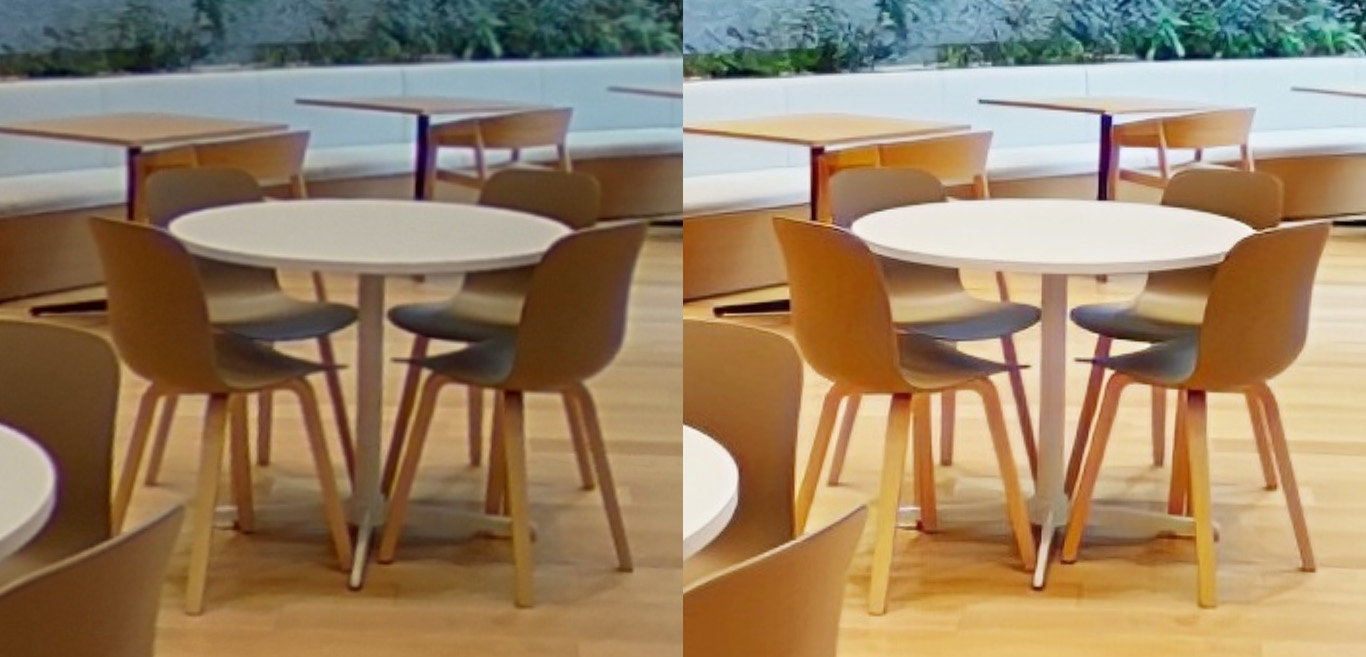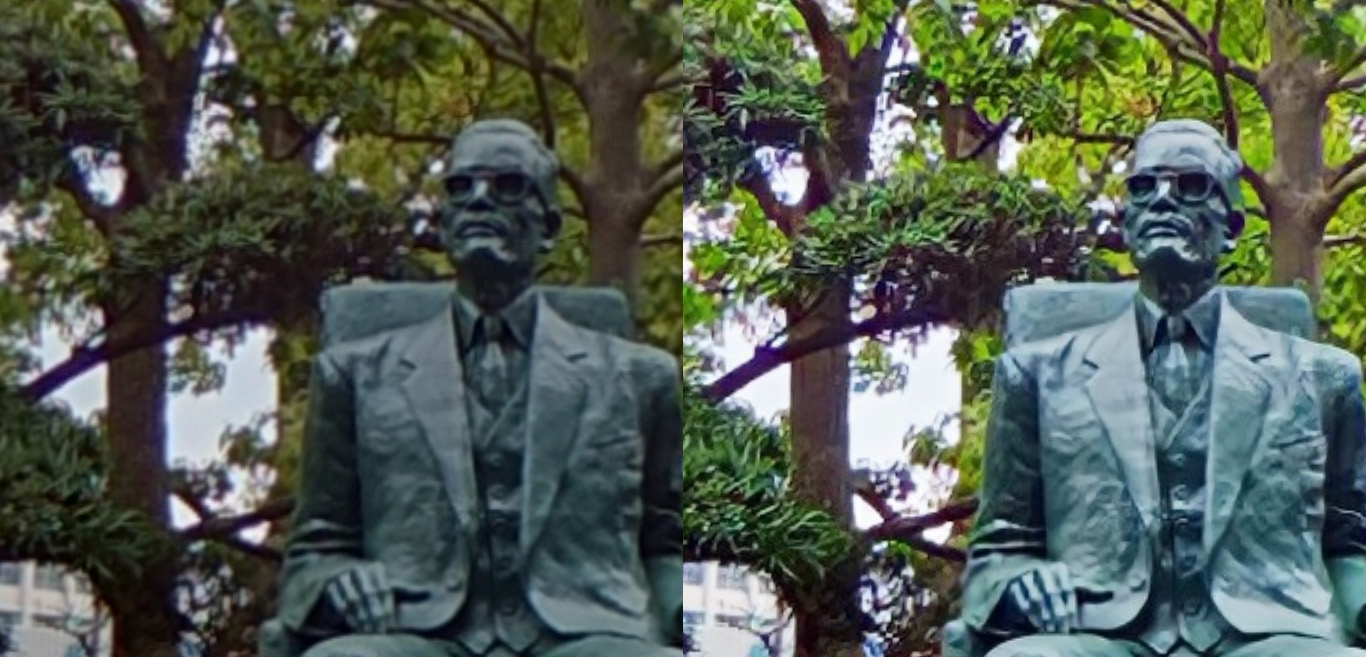- Home
- Ricoh's Technology
- AI-Based Image Enhancement Technology for 360-degree Images
AI-Based Image Enhancement Technology for 360-degree Images
Product: THETA 360.biz
Background
In 2013, Ricoh released the RICOH THETA, the world's first 360-degree camera designed for the consumer market. Since then, Ricoh has been creating and expanding new ways for visual presentation. Today, 360-degree images have become popular among consumers, shared on social networking services (SNS) and enjoyed in now-fashion virtual reality (VR) applications. Even in businesses, 360-degree cameras are widely used to create appealing images and are proving to be solutions that improve work efficiency. They are particularly popular in the real-estate industry for virtual tours that allow people to preview properties online. The demand for virtual tours using images taken by 360-degree cameras is growing.
Like any technology, 360-degree cameras have strengths and weaknesses. While they offer a very wide angle and give users the opportunity to view an image from any angle, resolution can often be lower than that of an regular digital camera. The low resolution becomes more apparent when the image is enlarged.
Solution
Ricoh has developed a technology that uses artificial intelligence (AI) to augment 360-degree images.
The new technology uses a comprehensive approach to correct multiple elements of an entire 360-degree image, including resolution, noise, and chromatic aberration. This has enabled a giant leap in the improvement of image quality.
Ricoh has applied this technology to the THETA 360.biz cloud service. Users of the service can now enjoy AI-based image enhancement and brightness correction of their 360-degree panoramic images.

 Left: original, Right: enhanced
Left: original, Right: enhanced
Technical Highlights
Image enhancement technologies have been around for a long time, and deep learning has boosted improvements. Yet these technologies have not always been effective for all image types because of the complex makeup of image quality. The objective of image enhancement is to improve image quality, particularly resolution. Resolution itself is a complex issue and is difficult to model because it involves optical systems, sensors, and image processing.
Ricoh developed a new learning technology that enhances RICOH THETA images based on data sets. Each data set consists of a RICOH THETA image and a corresponding image taken by a Ricoh GR high image quality compact digital camera. The GR image is used as training data.
The new technology enables a cloud service that enhances 360-degree images uploaded to THETA 360.biz.

Ricoh’s Vision
360-degree cameras were originally designed for specialist applications, but Ricoh has changed all that. The RICOH THETA is capable of photographing a 360-degree image in a single shot and was developed and released under the concept of panoramic capture – capturing an entire 360-degree image. Since then, Ricoh has launched a range of different models and services and is at the forefront of this technology. Ricoh will continue to innovate and evolve 360-degree image processing technologies and provide increasingly useful 360-degree imaging services.
- *
- This technology was introduced on June 15, 2020 at the CVPR 2020 (IEEE/CVF International Conference on Computer Vision and Pattern Recognition), OmniCV Workshop: Omnidirectional Computer Vision in Research and Industry.
- *
- This research was jointly conducted by Ricoh and Ricoh Software Research Center (Beijing) Co., Ltd.
Related Information
Sorted by : field “Image Processing / Analysis” “AI (Artificial Intelligence)” | product type “Smart Vision”
